Usa Torii Gates

A large torii gate in front of the Jogu (Upper Shrine)
The torii gates commonly seen at Shinto shrines mark the passage from the secular world into sacred space. Many styles of torii gates are found across Japan, and Usa Jingu Shrine has its own unique style called the Usa torii. It is characterized by a dramatic curve of the top lintel and two black “rings” circling the pillars right beneath it. The horizontal beams of the Usa torii are not connected with a central strut, and they do not bear a shrine nameplate. The bright vermilion color of the torii is intended to serve as protection from evil and misfortune. All the torii gates on the Usa Jingu shrine grounds are constructed in this style.
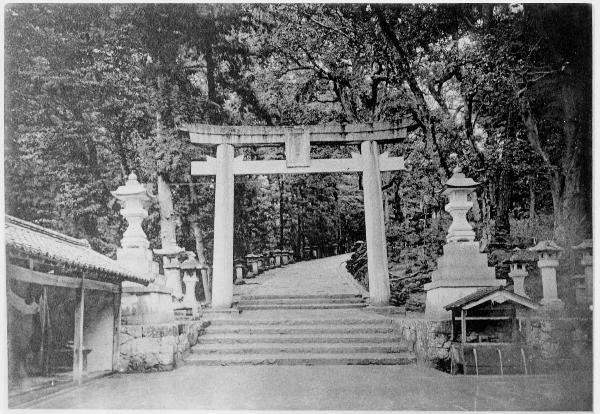
Myojin torii style
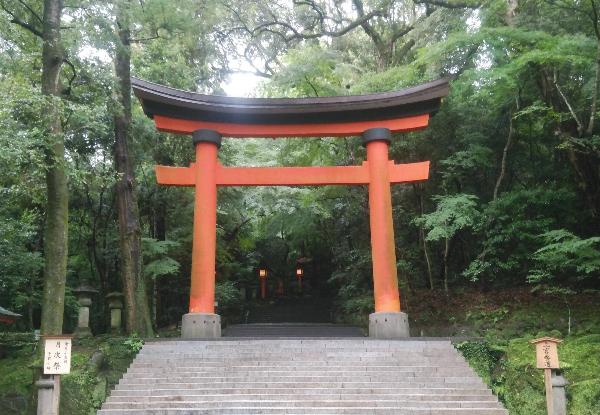
Usa torii style
Jogu (Upper Shrine) Torii Gate
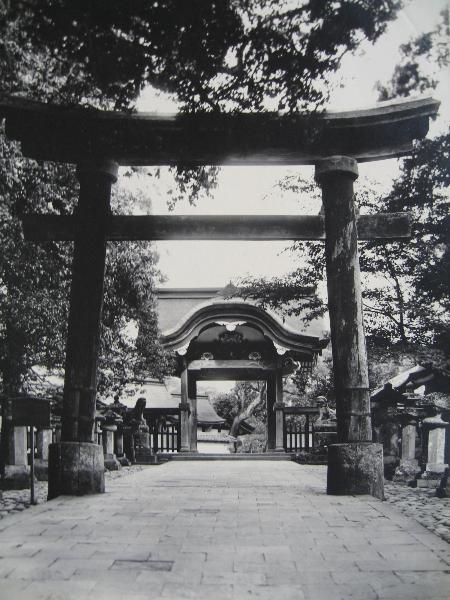
Torii and Saidaimon Gate at the Jogu
(early twentieth century)
The torii gate located at the top of the stone stairs leading to the Jogu (Upper Shrine) is considered to be the origin of the Usa torii style. It is sometimes called the Ichi no Torii (“first torii gate”) or the Hachiman Torii after the main deity of Usa Jingu.
Though it is not known when the first torii gate was erected in front of the Jogu area, it appears in documents from 1030. The date the current gate was built is likewise unknown, but records indicate that it was repaired in 1863, so it is at least 150 years old. The Jogu torii gate is designated a Tangible Cultural Property by Oita Prefecture.
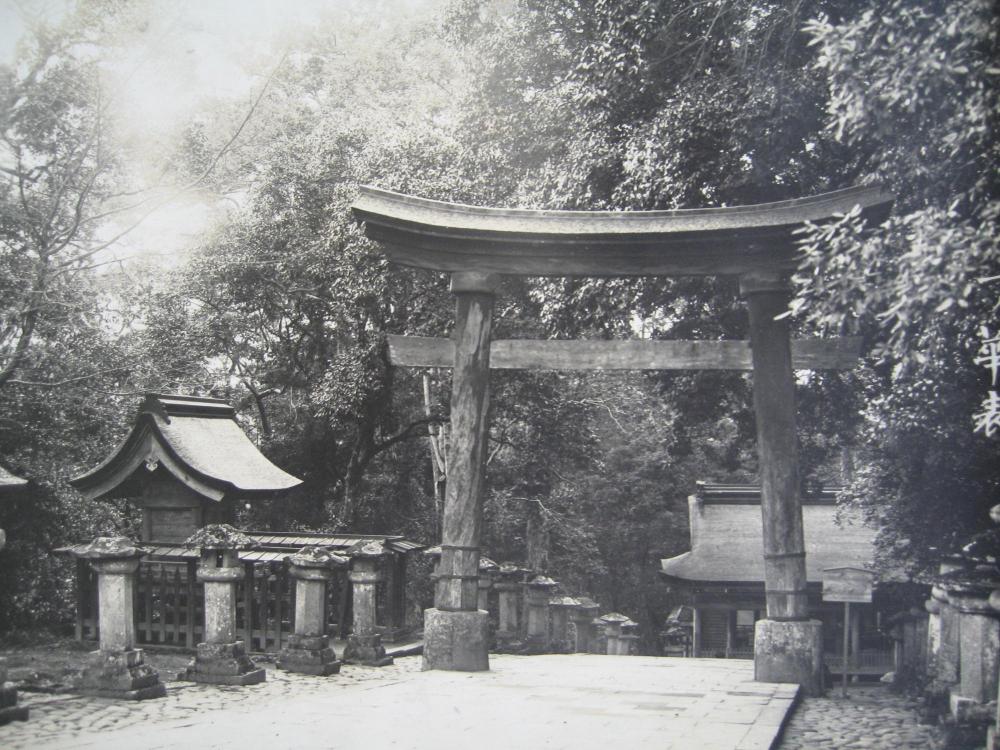
The Jogu torii gate sometime before the 1930s
Otorii Gate
The large torii gate along the main approach to Usa Jingu that comes into view after crossing into sacred ground over the Shinkyo Bridge is known as the Otorii (“great torii gate”). At 11.1 meters, it is the shrine’s tallest torii.
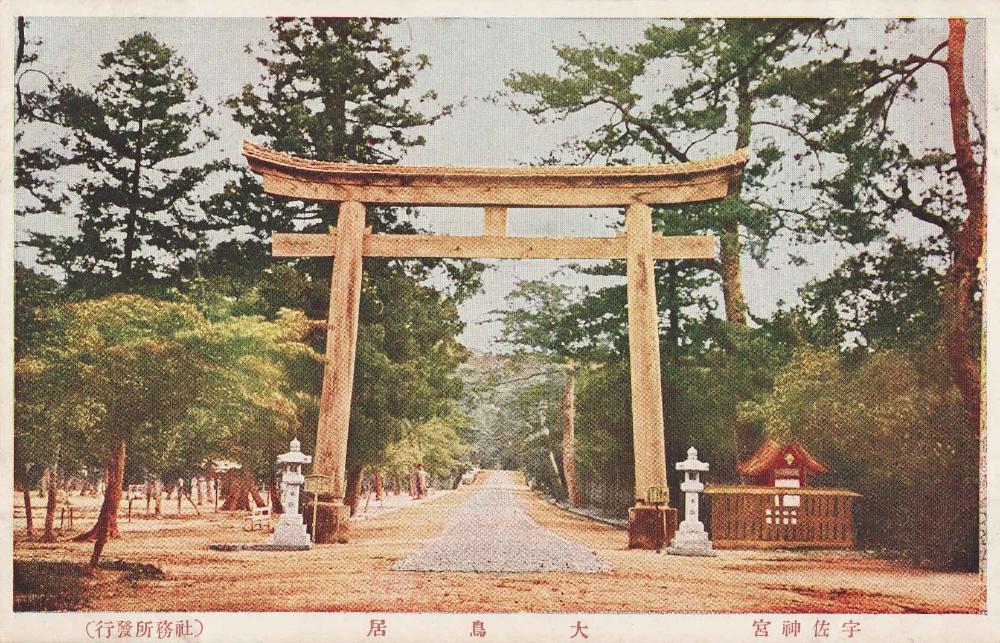
Otorii (early twentieth century)
The original Otorii was built in 1111. During changes of power in the seventeenth century, new daimyo lords provided financing to Usa Jingu, making it possible to repair the great torii. In 1798, the old gate was replaced by one made of Japanese cedar from nearby Mt. Omoto, the sacred mountain where the deity Hachiman is said to have first descended to earth. These older torii gates would not be classified as Usa torii, as they bore nameplates and lacked the characteristic black “rings” at the top of the pillars. After a typhoon destroyed the previous Otorii, the current version was constructed with concrete in 1937 in the distinctive Usa torii style.
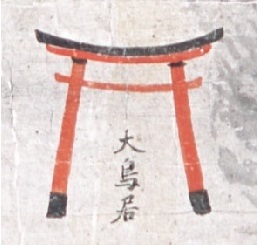
Otorii in the early fifteenth century
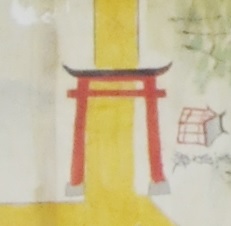
mid-eighteenth century
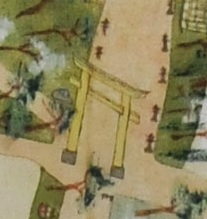
Otorii in 1882
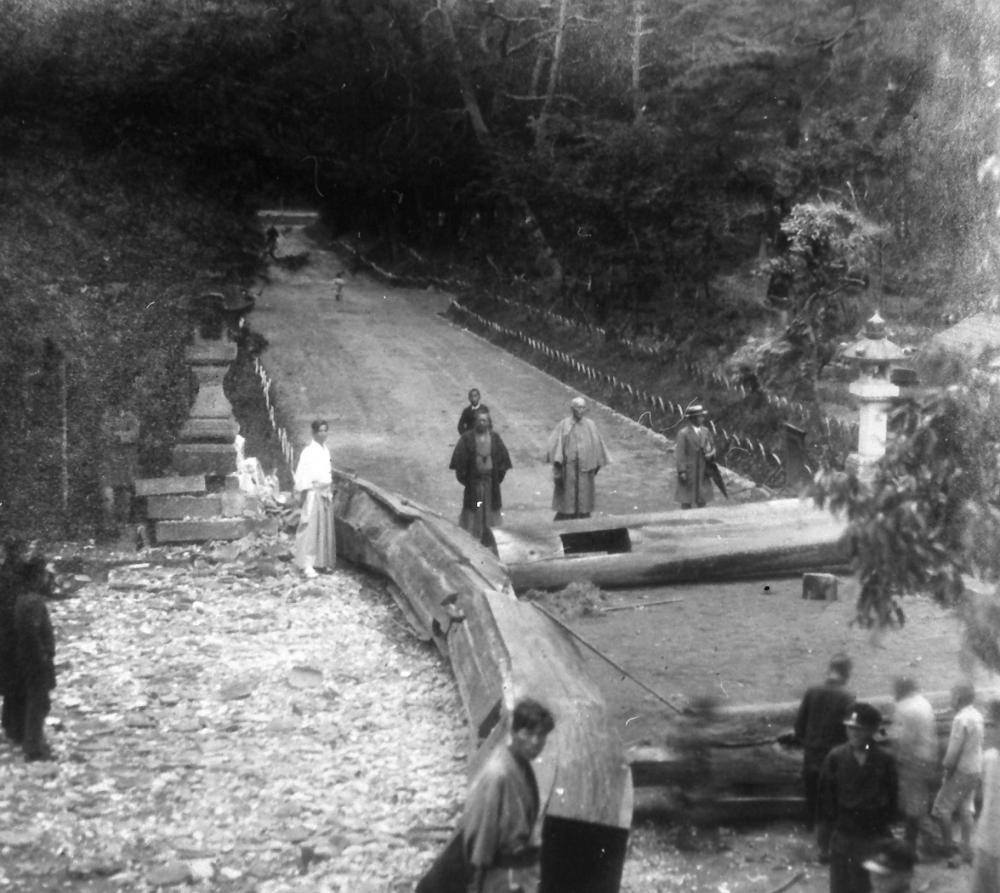
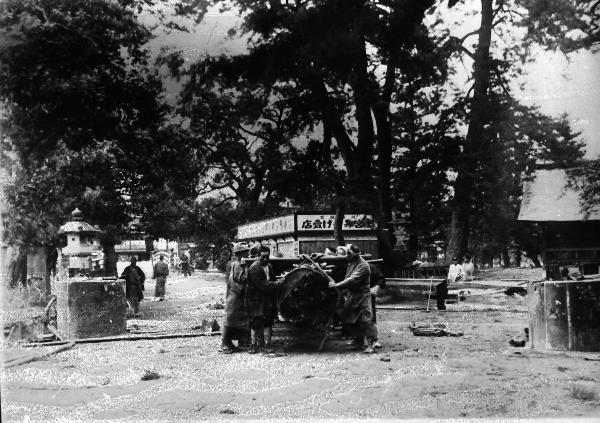

Collapsed Otorii after a typhoon (1934)
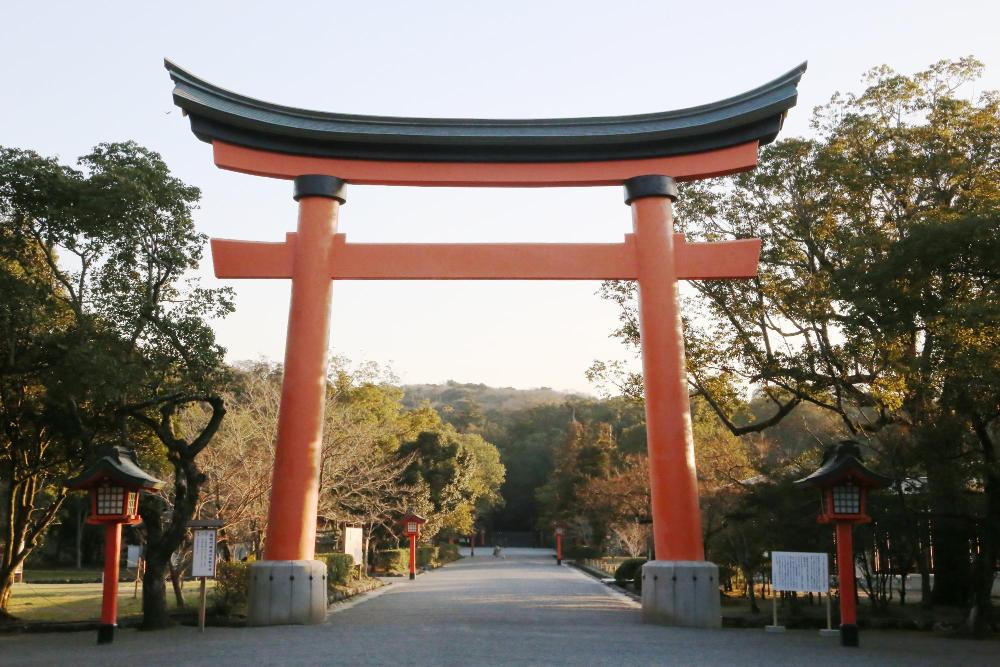
Present-day Otorii

This English-language text was created by Japan Tourism Agency.
- ページに関する評価
-







更新日:2024年03月18日